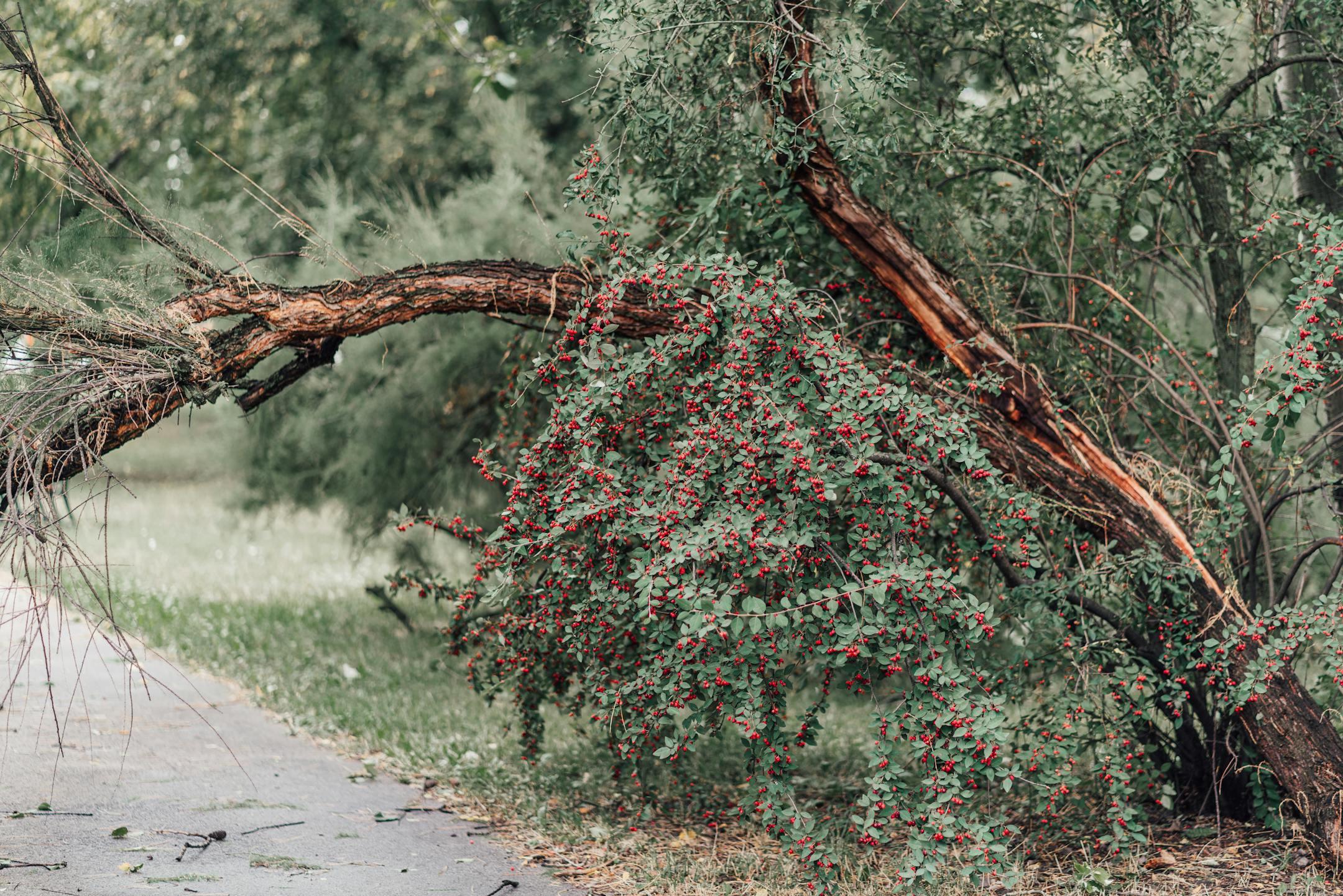
Metal siding is strong, reliable, and built to last—but like anything on your home, it won’t last forever. If you’ve been wondering when does metal siding have to be replaced, the answer depends on what shape it’s in, how old it is, and what kind of damage it’s been exposed to.
One type of damage people often overlook is a tree dent. A branch falls, hits your siding, leaves a dent or crack—and that’s it, right? Not quite. Let’s talk about why that’s a bigger deal than it looks, and the other warning signs that tell you it’s time to replace your siding.
Let’s start with the tree.
If a storm sends a branch flying into your home, and it dents the siding, that’s not just a visual issue. It’s a structural one.
When metal siding gets dented, even slightly, it can change how water runs off the surface. Water might now collect or pool instead of draining. That moisture can find its way behind the panel and start damaging the wood structure underneath. Once water gets in, you’re looking at rot, mold, or even interior damage over time.
We’ve seen homes in rainy Rockland County with what looked like a minor dent from a tree branch—but two years later, there’s soft wall sheathing, mold growth, and rising repair costs. That’s why if you’re asking, when does metal siding have to be replaced tree dent, the answer is sooner than you might think.
While a tree dent is a clear red flag, it’s not the only one. Here are a few others you don’t want to ignore:
Even though most modern metal siding is treated to resist rust, no coating lasts forever. If you’re seeing orange or brown spots—especially near the bottom where water collects—that’s rust starting to form. Once it appears, it spreads fast. And once it eats through, the only fix is replacement.
Siding should sit flat and tight against your house. If panels are pulling away, or there are visible gaps between seams, that means water and pests can get in. It also means the panels are no longer secure, and high winds might pull them off completely. If this is happening across several areas of the home, replacement makes more sense than patching.
The finish on metal siding doesn’t just make it look good—it protects the metal underneath. When that starts to fade, peel, or chalk (you’ll notice a powdery residue on your hands), the siding is exposed to sun, moisture, and air. And without protection, the metal breaks down faster.
If your siding looks uneven or warped, it might have been installed improperly. Or it may have expanded and contracted over the years until it started shifting. In either case, warped siding loses its ability to protect your home from the elements. Water will always find its way into those small gaps—and once it does, the damage spreads.
Metal siding alone doesn’t insulate your home. But when it starts to wear out, any gaps or deterioration can let in cold air in winter and heat in summer. If your energy bills have gone up and your insulation hasn’t changed, your siding may be the problem.
Generally, metal siding lasts 30 to 50 years. Aluminum tends to fall at the lower end, while steel can go longer—especially if it’s well maintained.
But age isn’t the only factor. Weather, storm damage, poor installation, or improper repairs can cut that lifespan down.
That’s why it's important to inspect your siding regularly. Look for dents, rust, peeling paint, or signs of movement. If you see any of these, it’s time to ask honestly: when does metal siding have to be replaced, tree damage or not?
If it’s no longer doing its job—keeping water out, insulating your home, and holding up to the weather—it’s time.
In our region, siding takes a beating. Winters are rough, storms are frequent, and trees grow close to homes. At Nicholas Contracting, we’ve been working in these conditions for over 40 years. We’ve seen how quickly a minor issue can become a major one.
A dent from a tree. Rust forming at the seam. A panel shifting slightly after a harsh winter. These aren’t just cosmetic. They’re early signs of a problem. If you catch them early, you can save yourself the cost of interior repairs later on.
If you’re unsure whether your metal siding needs to be replaced, we’ll take a look. At Nicholas Contracting, we’ve built our name on honest work and clear answers.
We don’t push what you don’t need. But we also won’t ignore a problem that can cost you more in the long run. If your siding is damaged, aging, or visibly affected by a tree dent, it’s time to talk.
Call us or schedule a free inspection. We’ll check the siding, look behind the panels if needed, and let you know where things stand.
Because knowing when does metal siding have to be replaced tree dent or not means protecting your home before the damage spreads. And that’s always worth it.